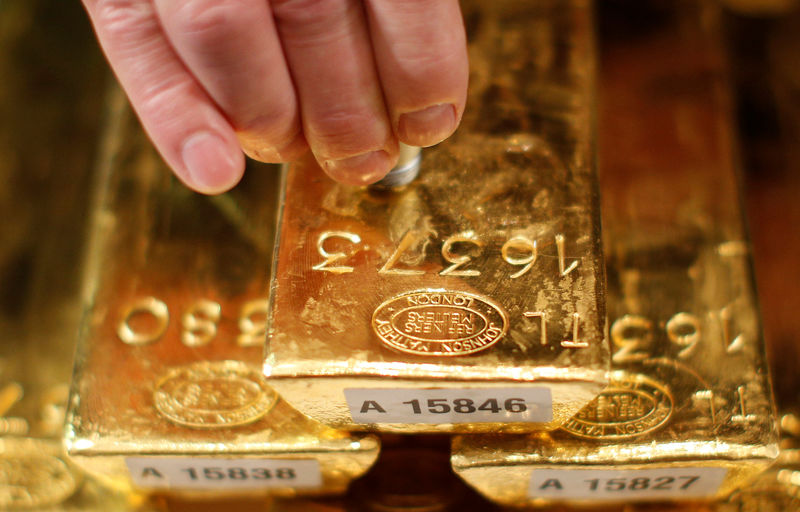Select Language

Gold prices rose from a one-month low in Asian trade on Monday, supported by a weaker dollar, though safe-haven demand stayed muted amid easing Middle East tensions and optimism over potential U.S. trade deals.
Spot Gold rose 0.5% to $3,290.25 an ounce, while Gold Futures for August gained 0.4% to $3,300.0/oz by 02:00 ET (06:00 GMT).
Bullion fell nearly 3% last week, marking its steepest weekly drop since early May. It was on track to end the month flat, as early gains from geopolitical tensions were erased by losses after the Israel-Iran ceasefire.
Gold supported by weak dollar; US trade deals in focus
A ceasefire between Israel and Iran brokered by U.S. President Donald Trump last week eased geopolitical risk in the Middle East and curbed the appeal of gold.
On the trade front, a U.S.–China deal signed last week in Geneva, which resolves rare-earth shipments and trims key trade friction, bolstered sentiment.
Meanwhile, a U.S.–U.K. trade agreement came into effect Monday, slashing car tariffs to 10% and fully eliminating aircraft parts duties.
However, the July 9 deadline looms for the potential reinstatement of duties on other trading partners, and for global steel and aluminum tariffs.
Gold prices were supported by a weaker dollar as markets were increasingly betting on at least one Federal Reserve rate cut by September.
The US US Dollar Index fell 0.2% in Asian trading hours, remaining near a three-year low.
Metal markets rise, Platinum set for 30% monthly jump
A weaker dollar makes the commodity cheaper for foreign buyers, thus increasing its demand.
Platinum Futures jumped 1.9% to $1,377.00 after a recent pullback from a more than decade-high. The precious metal was set to climb more than 30% this month.
Silver Futures were largely muted at $36.045 per ounce.
Meanwhile, benchmark Copper Futures on the London Metal Exchange were unchanged at $9,888.95 a ton, while U.S. Copper Futures rose 0.7% to $5.132 a pound.
Gains in the red metal were capped as data showed China’s manufacturing sector contracted in June, highlighting ongoing weakness in external demand amid elevated U.S. trade tariffs on the world’s top copper importer.

